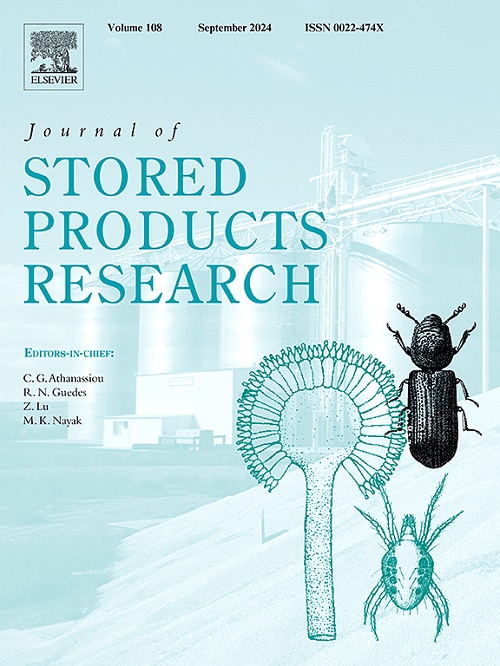Recent advances in the drying of medicinal herb by novel physical field-based techniques: A review
IF 2.7
2区 农林科学
Q1 ENTOMOLOGY
引用次数: 0
Abstract
Fresh medicinal herbs are highly perishable and sensitive to chilling. Traditional drying techniques, such as hot air and solar drying, are well-established and widely adopted commercially. However, these methods involve long drying times, which can potentially lead to a decline in the quality of medicinal herbs, including discoloration, burning, or the loss of functional properties. As public awareness of health continues to grow and the concept of medicine and food homology gains increasing attention, the demand for high-quality dried medicinal herbs has been rising annually, prompting researchers to explore and develop novel drying technologies. This paper introduces a series of novel physical field-based drying (PFD) technologies, which involve electromagnetic, electric fields, and acoustic, as well as their combinations. These technologies are reviewed for possible opportunities to enhance the drying efficiency and improve the quality characteristics of medicinal herbs. The drying mechanism, major finds, typical equipment, as well as the characteristics of each technology are systematically reviewed. Furthermore, the challenges and future directions of PFD are also discussed to facilitate its better practical applications within the medicinal herb industry. This paper also presents specific theoretical insights and practical applications, aimed to enhance the design and scaling-up process of PFD technologies.
基于物理场的中药干燥新技术研究进展综述
新鲜的草药极易腐烂,对冷藏很敏感。传统的干燥技术,如热风干燥和太阳能干燥,已经建立并广泛应用于商业。然而,这些方法涉及较长的干燥时间,这可能会导致药材质量下降,包括变色,燃烧或功能特性的丧失。随着公众健康意识的不断增强和药食同源概念的日益关注,对高品质干燥药材的需求逐年上升,促使研究人员不断探索和开发新的干燥技术。本文介绍了一系列新的基于物理场的干燥技术,包括电磁、电场和声波及其组合。本文对这些技术进行了综述,以期为提高药材的干燥效率和改善药材的质量特性提供可能的机会。对干燥机理、主要发现、典型设备以及各工艺的特点进行了系统评述。此外,还讨论了PFD面临的挑战和未来的发展方向,以促进其在中药行业中的更好的实际应用。本文还提出了具体的理论见解和实际应用,旨在提高PFD技术的设计和放大过程。
本文章由计算机程序翻译,如有差异,请以英文原文为准。
求助全文
约1分钟内获得全文
求助全文
来源期刊
CiteScore
5.70
自引率
18.50%
发文量
112
审稿时长
45 days
期刊介绍:
The Journal of Stored Products Research provides an international medium for the publication of both reviews and original results from laboratory and field studies on the preservation and safety of stored products, notably food stocks, covering storage-related problems from the producer through the supply chain to the consumer. Stored products are characterised by having relatively low moisture content and include raw and semi-processed foods, animal feedstuffs, and a range of other durable items, including materials such as clothing or museum artefacts.

 求助内容:
求助内容: 应助结果提醒方式:
应助结果提醒方式:


